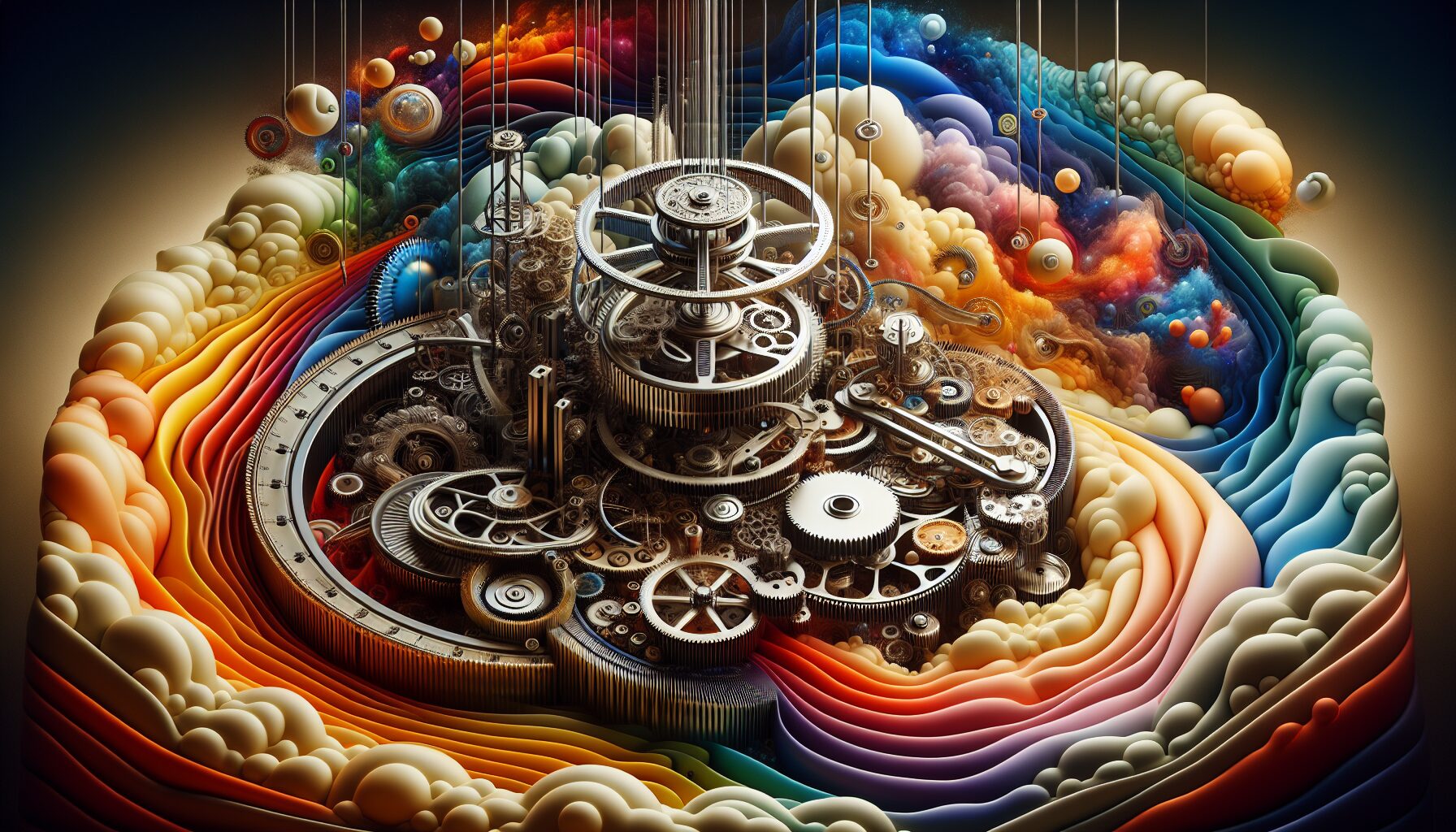In an era dominated by information, the intricacies of belief and ideology have become both a guiding force and a source of contention. Our beliefs, once considered deeply personal and spiritual, have, for some, turned into mechanized responses. This evolution from organic to mechanical begs the question: How do ideals evolve into mechanical belief systems?
Understanding the Evolution
The term “mechanical belief” refers to the automatic, unexamined adherence to a set of ideals. It reflects a process where beliefs are no longer the result of personal introspection but rather a product of external programming. George Orwell, in his seminal work “1984”, captured this phenomenon with chilling relevance, stating, “Doublethink means the power of holding two contradictory beliefs in one’s mind simultaneously, and accepting both of them.“
As Orwell suggests, the acceptance of incongruous beliefs is not just possible, but engineered by mechanisms designed to eliminate critical thought. The same principle applies to mechanical beliefs. Over time, beliefs lose their organic quality and become more like gears in a clock, set in motion by external forces.
Post-Truth Era and Information Overload
In the post-truth age, where emotions often trump facts, people find themselves overwhelmed with information. The consequence, as David Roberts from Vox notes, is, “The information ecosystem we inhabit erodes trust in institutions and factual discourse.” With a constant avalanche of facts, figures, and opinions, individuals struggle to discern the truth, often resulting in reliance on simplified, rote beliefs.
- Confirmation Bias: The tendency to seek, interpret, and remember information that confirms one’s preconceptions.
- Echo Chambers: Environments where individuals are only exposed to opinions and information that reflect their own beliefs.
- Algorithmic Influence: Social media platforms create feedback loops that reinforce existing beliefs by tailoring content to user preferences.
The Role of Institutions and Authorities
Institutions such as schools, governments, and religions have long been arbiters of belief. Yet, as “Infotopia” author Cass Sunstein explains, “Once accepted beliefs become part of the institutional fabric, they acquire a certain immovability.” When beliefs are institutionalized, dissent or evolution of thought becomes markedly difficult because deviation is often met with resistance.
Any system that relies on humans making decisions benefits from stripping decision-making down to a set of easily remembered heuristics, often reducing complexity to a set of mechanical operations.
Breaking the Cycle
Recognizing the mechanical nature of beliefs is the first step towards breaking free from their grasp. Encouraging critical thought and fostering environments where questioning is valued is fundamental. Here’s how:
- Education: Encourage curricula that prioritize critical thinking and skepticism over rote memorization.
- Open Discourse: Create spaces where open discussions can happen, valuing civil discourse and challenging mainstream narratives.
- Media Literacy: Educate individuals to critically evaluate sources of information and recognize bias.
From Mechanization to Rehumanization
The antidote to mechanization is returning to the roots of personal belief systems that reflect nuanced, deeply held, and carefully examined convictions. As Erich Fromm eloquently put it in “The Art of Loving”, “Loving presents a paradox: it means to affirm, to take care of, to love one’s passions.” Beliefs, like passions, need to be nurtured, examined, and occasionally uprooted to ensure they grow healthy and strong.
In this relentless march of ideals turning mechanical, the choice remains personal: Will we allow our beliefs to be governed by unseen forces, or will we take the reins, scrutinizing and redefining them in pursuit of a more authentic life?
